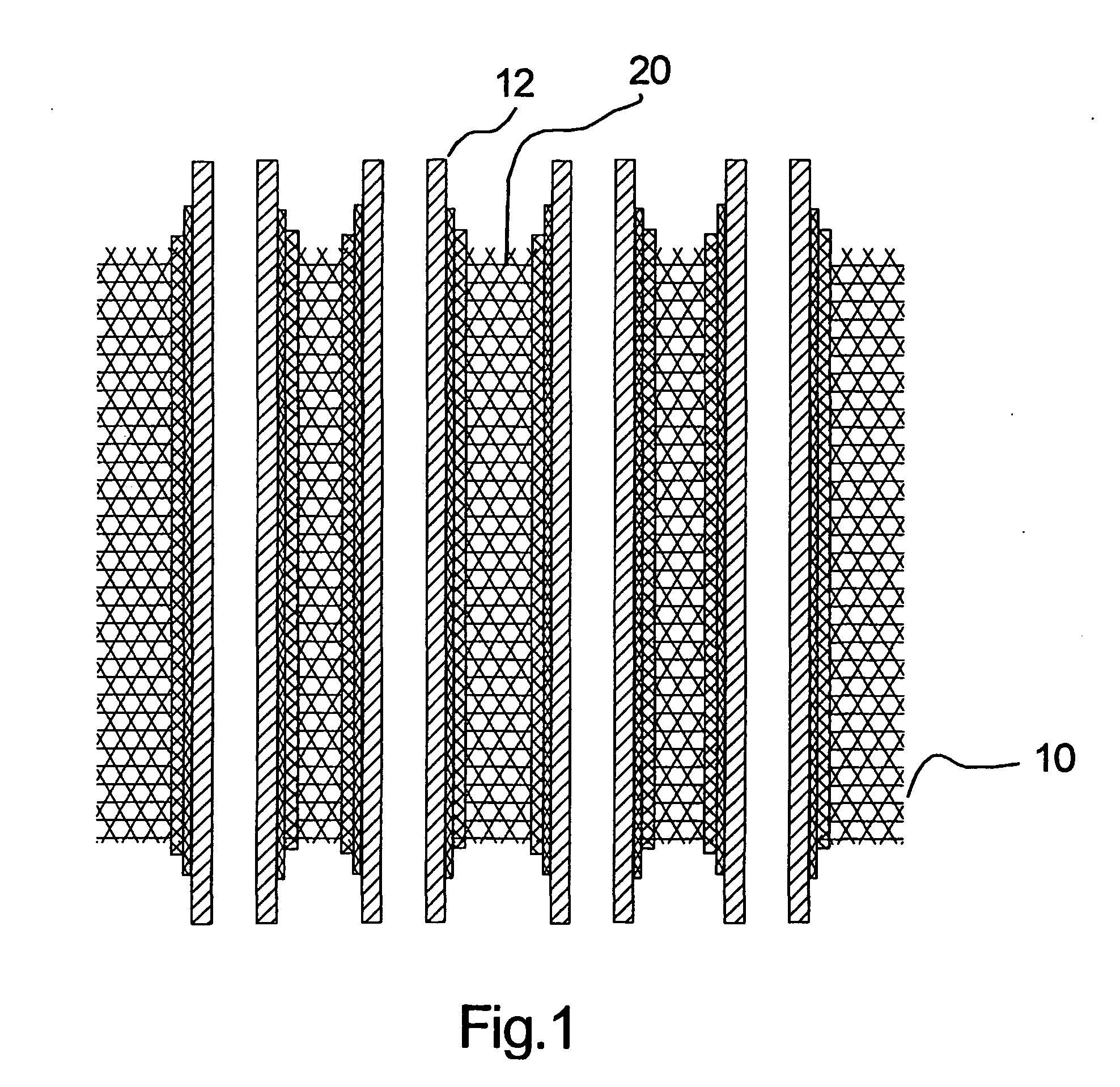Tubular solid oxide fuel cell stack
a technology of tubular solid oxide and stack, which is applied in the direction of fuel cell details, final product manufacture, climate sustainability, etc., can solve the problems that the design of large diameter self-supporting tubular fuel cells is not particularly well suited to small diameter fuel cells
- Summary
- Abstract
- Description
- Claims
- Application Information
AI Technical Summary
Problems solved by technology
Method used
Image
Examples
Embodiment Construction
Definitions
[0041] When describing the present invention, the following terms have the following meanings, unless indicated otherwise. All terms not defined herein have their common art-recognized meanings. [0042] The term “fibre” or “filament” refers to a single strand of fibrous material; “fibre tow” or “fibre bundle” shall refer to a multi-filament yarn or an array of fibres; and “fibre core” shall refer to a fibre, filament, fibre tow or fibre bundle. In all cases, the fibre core is electrically conductive or treated to be electrically conductive to allow its use as an electrode. [0043] The term “ceramic” refers to inorganic non-metallic solid materials with a prevalent covalent or ionic bond including, but not limited to metallic oxides (such as oxides of aluminum, silicon, magnesium, zirconium, titanium, chromium, lanthanum, hafnium, yttrium and mixtures thereof) and nonoxide compounds including but not limited to carbides (such as of titanium tungsten, boron, silicon), silic...
PUM
| Property | Measurement | Unit |
|---|---|---|
| porosity | aaaaa | aaaaa |
| porosity | aaaaa | aaaaa |
| porosity | aaaaa | aaaaa |
Abstract
Description
Claims
Application Information
 Login to View More
Login to View More - R&D
- Intellectual Property
- Life Sciences
- Materials
- Tech Scout
- Unparalleled Data Quality
- Higher Quality Content
- 60% Fewer Hallucinations
Browse by: Latest US Patents, China's latest patents, Technical Efficacy Thesaurus, Application Domain, Technology Topic, Popular Technical Reports.
© 2025 PatSnap. All rights reserved.Legal|Privacy policy|Modern Slavery Act Transparency Statement|Sitemap|About US| Contact US: help@patsnap.com



